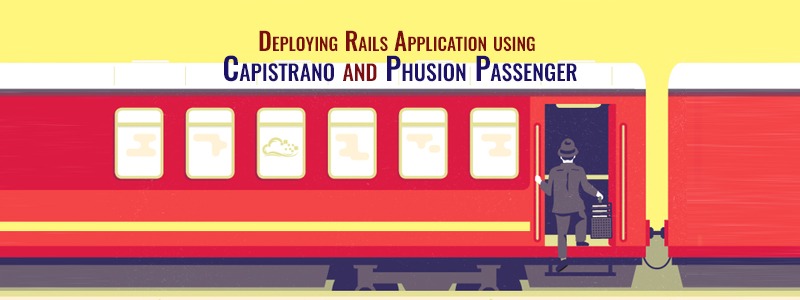The logistics industry is rapidly evolving, driven by the need for efficient supply chain management, real-time tracking, and streamlined operations. As businesses strive to meet these demands, robust and scalable software solutions become essential. Ruby on Rails (RoR), a powerful web application framework, has emerged as a top choice for developing logistics apps due to its flexibility, rapid development capabilities, and strong community support.
Why Choose Ruby on Rails for Logistics Apps?
Ruby on Rails offers several advantages that make it an ideal choice for developing logistics applications. Here are the key reasons why RoR is a great fit for logistics and supply chain management:
- Développement rapide et prototypage
- Convention Over Configuration: Rails follows the “Convention over Configuration” principle, which reduces the time required for setup and configuration. This allows developers to focus on building core features rather than spending time on repetitive tasks.
- Scaffolding and Generators: Rails provides scaffolding tools and generators that enable developers to quickly create and manage models, views, and controllers. This speed of development is crucial in logistics, where time-to-market can be a competitive advantage.
- Scalability and Performance
- Horizontal Scalability: Applications Rails can be scaled horizontally by adding more servers or instances, which is vital for logistics applications that may need to handle high volumes of data and transactions.
- Performance Optimization: Rails supports caching mechanisms, background job processing (using tools like Sidékiq or Delayed Job), and database optimization, all of which are essential for maintaining the performance of a logistics app.
- Robust and Secure Architecture
- Security Features: Rails comes with built-in security features to protect against common vulnerabilities such as SQL injection, cross-site scripting (XSS), and cross-site request forgery (CSRF). This is especially important in logistics, where sensitive data like customer information, shipment details, and financial transactions must be secured.
- Modular Architecture: Rails supports a modular architecture that allows developers to build, maintain, and upgrade different parts of the application independently. This is useful for logistics apps, which often require integration with third-party services and APIs.
- Strong Ecosystem and Community Support
- Rich Ecosystem of Gems: The Rails ecosystem includes thousands of gems (libraries) that can be easily integrated to add new features to an application. For logistics apps, this could mean adding functionalities like GPS tracking, payment gateways, and inventory management without reinventing the wheel.
- Active Community: Rails has a large, active community that contributes to its continuous improvement. This community provides support, plugins, and updates, ensuring that your logistics app remains up-to-date and secure.
- Comprehensive Testing Framework
- Built-in Testing Tools: Rails comes with a robust testing framework (RSpec, Minitest) that allows for automated testing of models, controllers, and views. This is crucial for logistics applications, where any errors or downtime can lead to significant operational disruptions.
- Continuous Integration and Deployment: Rails supports integration with CI/CD tools (like Jenkins, CircleCI, or GitHub Actions) to automate testing, deployment, and monitoring, ensuring that new features or updates do not introduce errors.
What are the Key Features of Logistics Apps Built with Ruby on Rails?
To address the specific needs of logistics businesses, a Ruby on Rails-based logistics app can include the following key features:
1. Real-Time Shipment Tracking
- GPS Integration: Integration with GPS and map services (e.g., Google Maps, Mapbox) allows for real-time tracking of shipments and vehicles. Rails gems like geocoder can be used to implement location-based features.
- Push Notifications: Alerts and notifications for shipment updates, delays, and arrivals can be easily implemented with Rails’ ActionCable and background job processing.
2. Inventory and Warehouse Management
- Stock Monitoring: Rails can handle complex inventory management systems, enabling users to monitor stock levels, manage reorders, and reduce inventory costs.
- Warehouse Optimization: Features like location-based inventory management and automated replenishment can be developed using Rails’ flexible model associations and background processing tools.
3. Order Management and Fulfillment
- Order Processing: Rails supports seamless order management, from receiving orders to processing, packaging, and dispatching them. ActiveRecord’s powerful querying capabilities help manage orders efficiently.
- Automated Billing and Invoicing: Integration with payment gateways and invoicing systems can be achieved through Rails gems like Rayure, PayPalou Braintree.
4. Route Optimization and Fleet Management
- Dynamic Route Planning: Rails applications can integrate with APIs that provide route optimization based on factors like traffic, weather, and delivery priorities.
- Fleet Management: Features like vehicle maintenance tracking, fuel management, and driver management can be incorporated, helping logistics companies manage their fleet more effectively.
5. Reporting and Analytics
- Data-Driven Insights: Rails’ ActiveRecord and support for data visualization tools (like Chartkick et D3.js) enable developers to create detailed reports on delivery times, costs, and performance metrics.
- Custom Dashboards: Personalized dashboards for different user roles (admin, manager, driver) can provide quick access to important KPIs and analytics.
What are the Types of Logistics Apps?
Logistics apps play a crucial role in managing and optimizing various aspects of the supply chain, transportation, and inventory. They cater to different needs within the logistics industry, ranging from real-time tracking to warehouse management. Here’s a rundown of the main types of logistics apps:
- Fleet Management Apps
-
Purpose: Manage and monitor a company’s vehicle fleet, including trucks, vans, and other transportation assets.
-
Caractéristiques:
- GPS tracking and route optimization
- Vehicle maintenance scheduling
- Fuel management and consumption tracking
Driver behavior monitoring and performance analytics
- Shipment Tracking Apps
-
Purpose: Provide real-time visibility into the status and location of shipments throughout their journey.
-
Caractéristiques:
-
Real-time GPS tracking
-
Estimated delivery times
-
Notifications and alerts for delays or changes
-
Integration with carrier systems for accurate tracking information
-
- Inventory Management Apps
-
Purpose: Oversee and optimize inventory levels, orders, and stock across warehouses and retail locations.
-
Caractéristiques:
-
Real-time inventory tracking and updates
-
Automated stock reordering and replenishment
-
Barcode scanning and RFID integration
-
Inventory reporting and analytics
-
- Warehouse Management Apps
-
Purpose: Streamline warehouse operations and improve efficiency in managing goods and materials.
-
Caractéristiques:
-
Inventory management and order picking
-
Warehouse layout optimization and space management
-
Automated sorting and packing processes
-
Integration with other logistics systems for end-to-end visibility
-
- Order Management Apps
-
Purpose: Handle and process customer orders from placement to fulfillment.
-
Caractéristiques:
-
Order tracking and status updates
-
Integration with e-commerce platforms and payment gateways
-
Automated order processing and invoicing
-
Customer communication and support tools
-
- Route Optimization Apps
-
Purpose: Optimize delivery routes to reduce travel time and fuel consumption.
-
Caractéristiques:
-
Dynamic route planning based on real-time traffic data
-
Multi-stop route optimization
-
Integration with GPS and mapping services
-
Delivery time estimation and scheduling
-
- Supply Chain Management Apps
-
Purpose: Oversee and coordinate activities across the entire supply chain.
-
Caractéristiques:
-
End-to-end visibility of supply chain processes
-
Supplier and vendor management
-
Demand forecasting and procurement planning
-
Performance metrics and analytics
-
- Freight Management Apps
-
Purpose: Manage the transportation of goods, including booking, tracking, and invoicing.
-
Caractéristiques:
-
Freight booking and scheduling
-
Real-time shipment tracking
-
Rate comparison and cost management
-
Documentation and compliance management
-
- Customs and Compliance Apps
-
Purpose: Ensure compliance with international shipping regulations and customs requirements.
-
Caractéristiques:
-
Documentation management and submission
-
Compliance tracking and alerts
-
Duty and tax calculations
-
Integration with customs authorities and regulatory bodies
-
- Returns Management Apps
-
Purpose: Handle and streamline the process of returning products.
- Caractéristiques:
- Return request processing and approval
- Reverse logistics management
- Integration with inventory systems for stock updates
- Reporting and analytics on return trends and reasons
The Main Challenges While Developing Logistics Applications
Developing logistics applications involves several complexities and challenges due to the nature of logistics operations, which often include real-time data handling, intricate workflows, and integration with various systems. Here are the main challenges faced during the development of logistics applications:
1. Real-Time Data Processing
-
Challenge: Logistics applications often require processing and displaying real-time data, such as shipment tracking, vehicle locations, and inventory levels. Ensuring that data is accurate, timely, and synchronized across multiple platforms can be challenging.
-
Solution: Implement robust data handling mechanisms and use technologies like WebSockets or streaming APIs to manage real-time data. Ensure efficient data caching and update strategies to maintain performance.
2. Integration with Multiple Systems
-
Challenge: Logistics apps need to integrate with various systems, including GPS, ERP (Enterprise Resource Planning), CRM (Customer Relationship Management), and third-party services like payment gateways and shipping carriers.
-
Solution: Use standard APIs and middleware to facilitate integration. Implement a well-defined architecture that supports modular and flexible integration, making it easier to connect with external systems.
3. Scalability and Performance
-
Challenge: Logistics applications must handle large volumes of data and user interactions, especially during peak times. Ensuring that the app remains performant and scalable as the user base and data volume grow is crucial.
-
Solution: Design the application with scalability in mind, using load balancers, horizontal scaling, and efficient database queries. Implement performance optimization techniques such as caching and asynchronous processing.
4. User Experience and Interface Design
-
Challenge: Logistics applications need to cater to various users, including drivers, warehouse managers, and customers. Designing an intuitive and user-friendly interface that meets the needs of different user roles can be challenging.
-
Solution: Conduct user research to understand the needs and preferences of different user groups. Use user-centered design principles and iterative testing to create an interface that is easy to use and efficient.
5. Security and Data Privacy
-
Challenge: Handling sensitive information, such as shipment details, personal data, and financial transactions, requires strong security measures. Protecting this data from breaches and ensuring compliance with regulations is critical.
-
Solution: Implement security best practices, including data encryption, secure authentication, and authorization. Regularly update the application to address vulnerabilities and comply with data protection regulations like GDPR or CCPA.
6. Compliance with Regulations
-
Challenge: Logistics applications must comply with various industry regulations and standards, such as customs regulations, transportation laws, and environmental policies. Ensuring compliance can be complex and time-consuming.
-
Solution: Stay updated with relevant regulations and incorporate compliance checks into the application. Work with legal and regulatory experts to ensure that the application meets all necessary requirements.
7. Handling Complex Workflows
-
Challenge: Logistics processes often involve complex workflows, including order processing, inventory management, and delivery scheduling. Mapping and automating these workflows within the application can be difficult.
-
Solution: Use workflow management tools and define clear process models. Implement automation where possible to streamline tasks and reduce manual intervention.
8. Data Accuracy and Integrity
-
Challenge: Maintaining accurate and consistent data across different modules of the application and external systems is crucial for effective logistics management. Inaccurate data can lead to errors and inefficiencies.
-
Solution: Implement data validation and verification mechanisms to ensure data accuracy. Use synchronization techniques to keep data consistent across different parts of the application and integrated systems.
9. Cross-Platform Compatibility
-
Challenge: Logistics applications may need to be accessible across various devices and platforms, including web, mobile, and desktop. Ensuring consistent functionality and user experience across these platforms can be challenging.
-
Solution: Develop the application using responsive design principles and test it across different devices and browsers. Consider using cross-platform development frameworks if building mobile apps.
10. Training and Adoption
-
Challenge: Users may need training to effectively use the new logistics application, especially if it involves new processes or technology. Ensuring smooth adoption and minimizing resistance to change is important.
-
Solution: Provide comprehensive training materials and support for users. Offer ongoing assistance and gather feedback to address any issues and improve the application based on user experiences.
Tech Stack We Use for Logistics App Development
Developing a logistics app requires a carefully chosen technology stack to handle various aspects such as real-time data processing, scalability, integration, and user experience. Here’s a breakdown of the key components of a tech stack typically used for logistics app development:
1. Frontend Technologies
-
HTML/CSS: For structuring and styling web pages, ensuring a responsive and user-friendly design.
-
JavaScript Frameworks/Libraries: To create dynamic and interactive user interfaces.
React: A popular library for building user interfaces, known for its component-based architecture and performance. -
Angular: A framework that provides a comprehensive solution for building robust web applications with two-way data binding and dependency injection.
-
Vue.js: A progressive framework for building user interfaces with a focus on simplicity and flexibility.
2. Backend Technologies
-
Ruby on Rails: A robust web application framework for developing scalable and maintainable backend systems. Rails is ideal for rapid development and follows convention over configuration principles.
-
Node.js: A JavaScript runtime for building scalable and high-performance server-side applications, often used with Express.js for handling HTTP requests and APIs.
-
Django: A Python-based web framework known for its robustness and built-in features, suitable for applications that require strong security and data handling capabilities.
3. Database Technologies
-
PostgreSQL: A powerful open-source relational database known for its reliability and advanced features, suitable for handling complex queries and large datasets.
-
MySQL: A widely used relational database known for its speed and ease of use, ideal for applications with moderate data complexity.
-
MongoDB: A NoSQL database that provides flexibility in handling unstructured data, useful for applications requiring fast and scalable data storage.
4. Real-Time Data Handling
-
WebSockets: For real-time communication between the client and server, enabling features like live tracking and notifications.
-
Kafka: A distributed streaming platform that handles high-throughput data feeds, useful for processing and analyzing large volumes of real-time data.
5. APIs and Integrations
-
RESTful APIs: For integrating with external systems, services, and third-party applications. APIs RESTful use HTTP methods to perform CRUD operations and are commonly used in web services.
-
GraphQL: An alternative to REST that allows clients to request only the data they need, optimizing data retrieval and reducing over-fetching.
6. Cloud Services and Hosting
-
AWS (Amazon Web Services): Provides a range of cloud services including computing power (EC2), storage (S3), and databases (RDS), suitable for scalable and flexible hosting solutions.
-
Google Cloud Platform (GCP): Offers cloud services for computing, storage, and databases, with additional tools for data analysis and machine learning.
-
Microsoft Azure: Provides cloud computing services, including virtual machines, databases, and analytics, ideal for enterprise-level applications.
7. DevOps and CI/CD
-
Docker: For containerizing applications, ensuring consistency across development, testing, and production environments.
-
Kubernetes: For orchestrating containerized applications, managing scaling, and maintaining availability.
-
Jenkins: An open-source automation server for continuous integration and continuous delivery (CI/CD), allowing for automated testing and deployment.
-
GitHub Actions: A CI/CD tool integrated with GitHub, enabling automation of workflows for building, testing, and deploying applications.
8. Data Security
-
SSL/TLS: For encrypting data transmitted between the client and server, ensuring secure communication.
-
OAuth2: An authorization framework for secure API access, allowing users to grant limited access to their data without sharing credentials.
JWT (JSON Web Tokens): For stateless authentication and securely transmitting information between parties.
9. Analytics and Monitoring
-
Google Analytics: For tracking user interactions and behavior within the app, providing insights into usage patterns and performance.
-
Prometheus: An open-source monitoring and alerting toolkit, used for tracking application performance and resource usage.
-
ELK Stack (Elasticsearch, Logstash, Kibana): For log management, analysis, and visualization, helping in monitoring and troubleshooting.
Conclusion
Ruby on Rails is a powerful framework for developing logistics applications that require rapid development, scalability, security, and a rich feature set. Its strong community, extensive library of gems, and adherence to best practices make it an excellent choice for building robust and efficient logistics solutions.
Whether you’re a startup looking to create an MVP for a new logistics app or an established company aiming to upgrade your supply chain management system, Ruby on Rails offers the tools, flexibility, and performance needed to bring your vision to life.
Questions fréquemment posées
1. What is Ruby on Rails, and why is it suitable for logistics app development?
Answer: Ruby on Rails is a web application framework written in Ruby that follows the MVC (Model-View-Controller) architecture. It is suitable for logistics app development because it offers rapid development capabilities, built-in tools for real-time data processing, robust security features, and a strong ecosystem of libraries (gems) that facilitate integration and scalability.
2. How does Ruby on Rails handle real-time updates in logistics applications?
Answer: Ruby on Rails handles real-time updates through ActionCable, which supports WebSockets for real-time communication between the server and client. This allows logistics applications to provide live tracking of shipments, instant notifications, and real-time updates on various logistics processes.
3. What are some common challenges in developing logistics apps with Ruby on Rails, and how can they be mitigated?
Answer: Common challenges include:
- Évolutivité: Can be mitigated by using horizontal scaling, optimizing database queries, and implementing caching strategies.
- Intégration: Simplified by using standardized APIs and modular architecture for seamless connectivity with external systems.
- Real-Time Data: Addressed by using ActionCable for real-time communication and employing background job processors like Sidekiq for handling asynchronous tasks.





